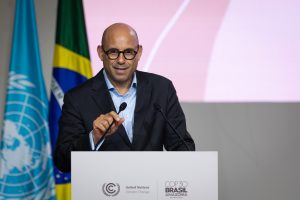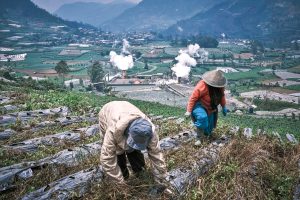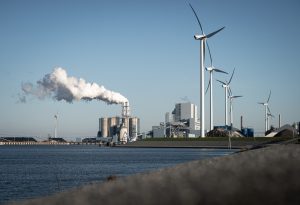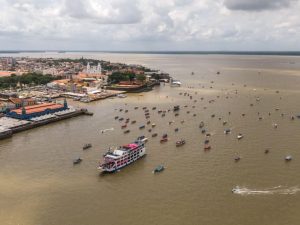Jakarta – Indonesia’s efforts to mainstream coastal ecosystems into its national climate policy entered a new phase at COP30 in Belém, Brazil. At this global forum, the government introduced the Indonesian Blue Carbon Ecosystem Roadmap and Action Guide. This strategic document places mangroves and other coastal ecosystems as an integral part of the Second Nationally Determined Contribution (SNDC).
The government emphasises that the sea and coastline will form part of the foundation for long-term mitigation and adaptation. Minister of Environment/BPLH, Hanif Faisol Nurofiq, emphasised that cross-ecosystem alignment is now a key principle of national planning. “The launch of this document demonstrates Indonesia’s leadership in connecting land and sea actions. Through strengthening science, strategic policies, and international cooperation, Indonesia wants to ensure that blue carbon contributions can be fully integrated into the national carbon economy and carbon market systems,” he said in an official statement on Tuesday, 18 November.
The integration of blue carbon into the SNDC has been submitted to the UNFCCC Secretariat. It marks an important milestone in repositioning Indonesia as a country that relies on the strength of its mangrove ecosystems, seagrass beds, and tidal salt marshes. These three ecosystems are now recognised as strategic elements that not only store large amounts of carbon but also strengthen the resilience of coastal and marine ecosystems. This policy also reinforces the implementation of Carbon Economic Value (NEK) in accordance with Presidential Regulation No. 110 of 2025.
This roadmap was developed through collaboration between several ministries—the Ministry of Maritime Affairs and Fisheries, KLH/BPLH, and the Ministry of Forestry—with support from the Global Green Growth Institute (GGGI) and funding from the Government of Canada. The document was prepared as a framework for implementing a high-integrity blue carbon programme across Indonesia’s coastal areas, while ensuring alignment with the FOLU Net Sink 2030 agenda.
Minister of Marine Affairs and Fisheries, Sakti Wahyu Trenggono, believes that the launch of this roadmap provides a clearer direction for the integration of the marine sector into the national climate architecture. “The blue carbon ecosystem is a very valuable climate asset for Indonesia. This roadmap is not only a policy guide, but also a framework for action that connects science, policy, and funding to ensure the quality and integrity of blue carbon ecosystems in the national carbon economy value system,” he said.
He also added that integrating the three blue carbon ecosystems into a single coastal-marine system would provide broad benefits, ranging from protecting biodiversity to increasing opportunities for sustainable marine-based economies.
In the momentum of COP30, Indonesia emphasised that the blue carbon policy is not merely a technical concept, but part of global leadership in addressing the climate crisis. “The global struggle against climate change requires leadership, consistent policies, and genuine solidarity. From Indonesia’s forests and seas, we offer climate solutions for a more sustainable future,” said Trenggono. (Hartatik)
Banner photo: Khun Ta/shutterstock.com















